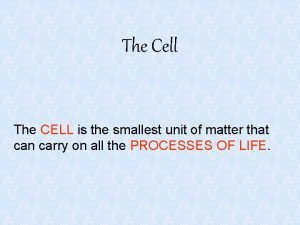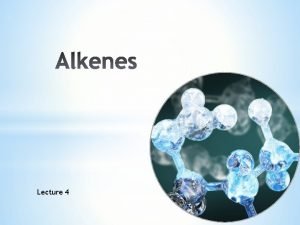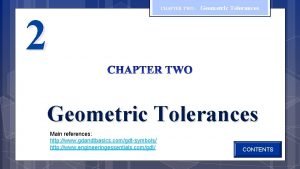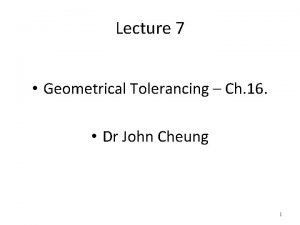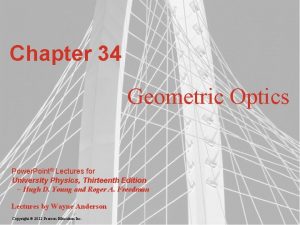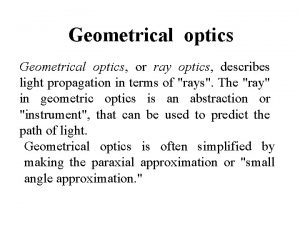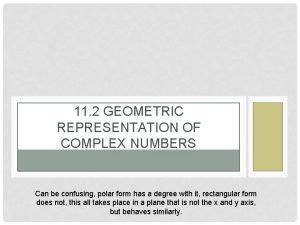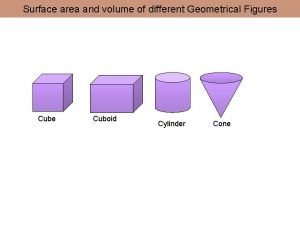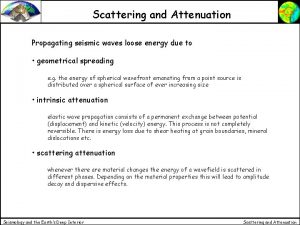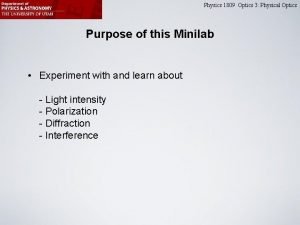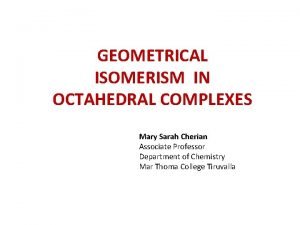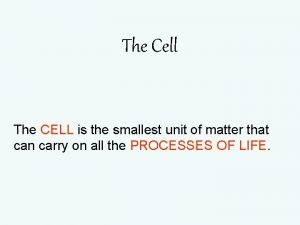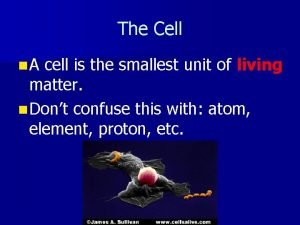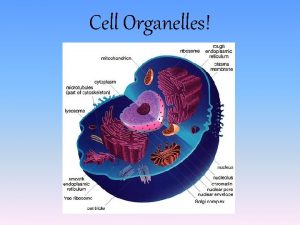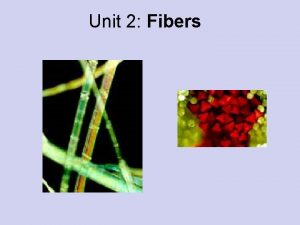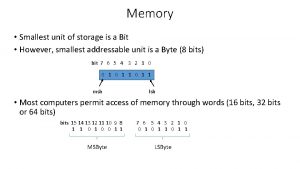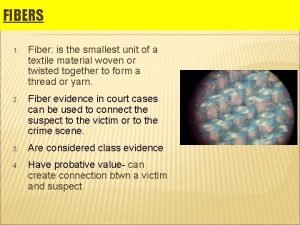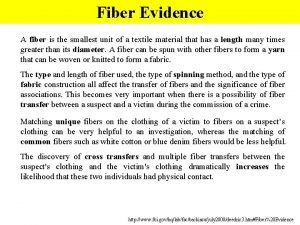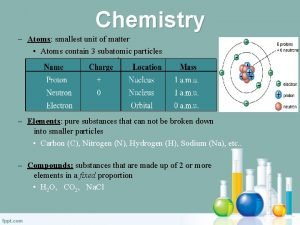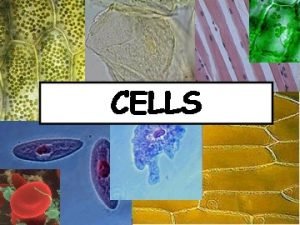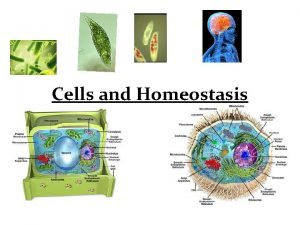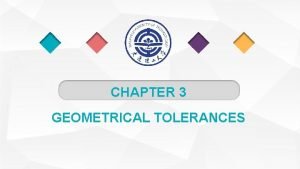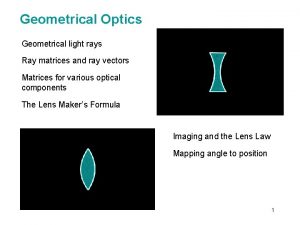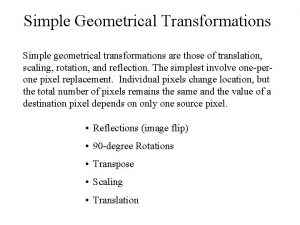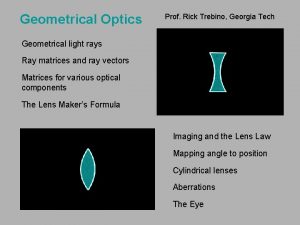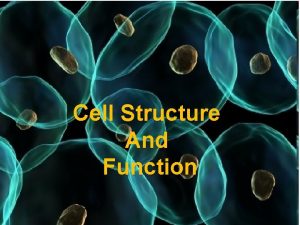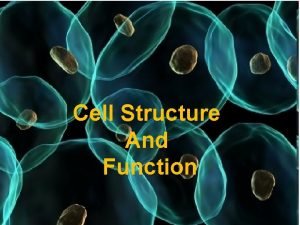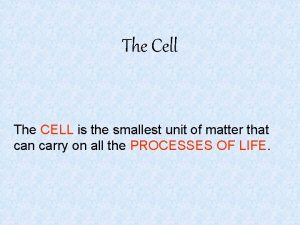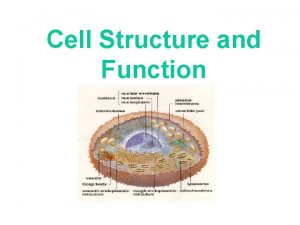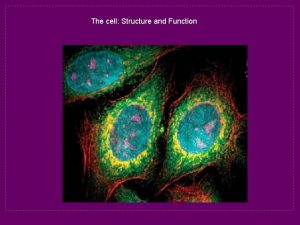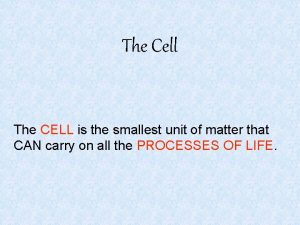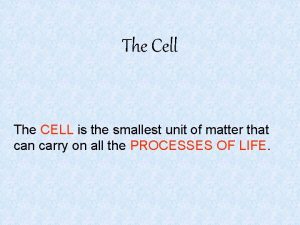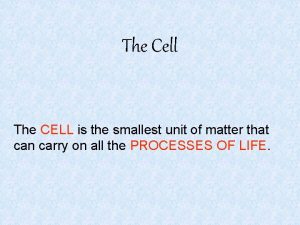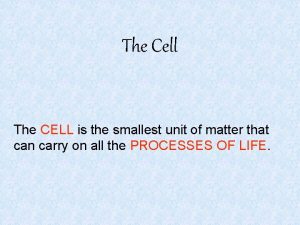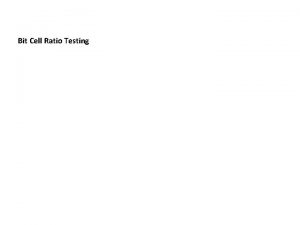Unit Cell The smallest geometrical portion of the

























- Slides: 25

Unit Cell � The smallest geometrical portion of the crystal lattice which can be used as repetitive unit to � build up the whole crystal is called unit cell.

Types of Unit Cell � Simple or primitive Unit cell In which the particles are present at the corners only.

Face centred unit cell In which the particles are present at the corners as well as at the centre of each of six faces

Body centred unit cell In which the particles are present at the corners as well as at the centre of the unit cell.

End centred unit cell � In which the particles are present at the corners and at the centre of two opposite faces.

Density of Unit Cell � Density of Unit Cell (d) � Density of unit cell = mass of unit cell / volume of unit cell � d = Z x M / a 3 = ZM / a 3 x NA � (The density of the unit cell is same as the density of the substance. ) � where, d = density of unit cell � M = molecular weight � Z = no. of atoms per unit cell � NA = Avogadro number � a = edge length of unit cell.


IMPERFECTION IN SOLIDS � Although in crystalline solid there is regular arrangement of constituent particles but yet the crystals are not perfect. There is always some king of irregularity in arrangement of constituent particles in small crystals. These irregularities are known as defects in crystal. .

TYPES OF DEFECTS There are 2 types of defects known in crystal lattice � POINT DEFECT � LINE DEFECT � Point defects- Point defects are the irregularities or deviations from ideal arrangement around a point or an atom in a crystalline substance. � Line defects- Line defects are the irregularities or deviations from ideal arrange ment in entire rows of lattice points.

POINT DEFECTS � Stoichiometric defects � Non- stoichiometric defects � Impurity defect

STOICHIOMETRIC DEFECTS � Vacancy defect � Interstitial defect � Frenkel defect � Schottky defect

Vacancy defect It arises when some of the lattice point remains unoccupied during the crystal formation. � It occurs in non-ionic compounds � It decreases the density of solid � It can be created by heating

Vacancy defect

Interstitial defect It arises when some of the constituent particles occupy the interstitial sites other than the lattice points. It occurs in non-ionic compounds It increases the density of solid

Interstitial defect

Frenkel defect It is actually the combination of vacancy defect and interstitial defect in ionic compound. It arises when smaller ion is dislocated from its normal site and occupies an interstitial site. It is also known as dislocation defect. � It occurs in ionic compounds � It does not change the density of solid � Shown by ionic compound having large difference in their constituent ions. � For example: Zn. S, Ag. Br, Ag. I etc.

Frenkel defect

Schottky defect It is actually a vacancy defect. But it causes vacancy of cation and anion both. � It occurs in ionic compounds � It decrease the density of solid � Shown by ionic compound having similar size of cation and anion � For example: Na. Cl, KCl, Ag. Br.

Schottky defect

DIFFERENCE BETWEEN SCHOTTKY AND FRENKEL DEFECT

Non- stoichiometric defects � Metal excess defect � Metal deficiency defect

Metal excess defect

Reasons for the cause of metal excess defect � a) Anionic vacancies: A compound may have an extra metal ion if the negative ion is absent from its lattice site. This empty lattice site is called a hole. To maintain electrical neutrality this site is occupied by an electron. The hole occupied by an electron is called f-centre or Farbenz enter centre. The F- centre is responsible for the colour of the compound. � b) Presence of extracations: A compound is said to have extracations if a cation is present in the interstitial site. An electron is present in the interstitial site to maintain the electrical neutrality.

Metal deficiency � Metal deficiency: This defect arises because of absence of metal ions from its lattice sites. The electrical neutrality is maintained by an adjacention having a higher positive charge.

IMPURITY DEFECTS Impurity defect is arises due to addition of small amount of impurity in ionic solid. It actually creates some kind of cationic vacancy in ionic solid. For example, if some Sr. Cl 2 is added in molten salt of Na. Cl it takes the position of Na+ in the crystal. But charge on Sr is 2+. After removing 2 ions of Na+, Sr 2+ occupy one point only. In this way it causes vacancy of 1 point.
 A cell is the smallest unit of
A cell is the smallest unit of Difference between structural and geometric isomers
Difference between structural and geometric isomers Geometrical symbols
Geometrical symbols Geometrical tolerance
Geometrical tolerance Flatness symbol in drawing
Flatness symbol in drawing Geometrical optics ppt
Geometrical optics ppt Geometrical
Geometrical Geometrical optics
Geometrical optics Geometrical
Geometrical Geometric representation of complex numbers
Geometric representation of complex numbers Lateral area of cylinder
Lateral area of cylinder Geometrical spreading
Geometrical spreading Geometrical shadow
Geometrical shadow Geometrical isomerism in coordination compounds
Geometrical isomerism in coordination compounds Robert hooke
Robert hooke The cell is the smallest
The cell is the smallest Smallest part of a cell
Smallest part of a cell Protist cell organelles
Protist cell organelles What is the smallest unit of cotton fabric
What is the smallest unit of cotton fabric Lithostratigraphy
Lithostratigraphy What is the smallest unit of storage
What is the smallest unit of storage Smallest unit of textile material is
Smallest unit of textile material is What is the smallest unit of a textile
What is the smallest unit of a textile Are atoms the smallest unit of matter
Are atoms the smallest unit of matter Steenblock
Steenblock What is the smallest unit of a living organism
What is the smallest unit of a living organism
